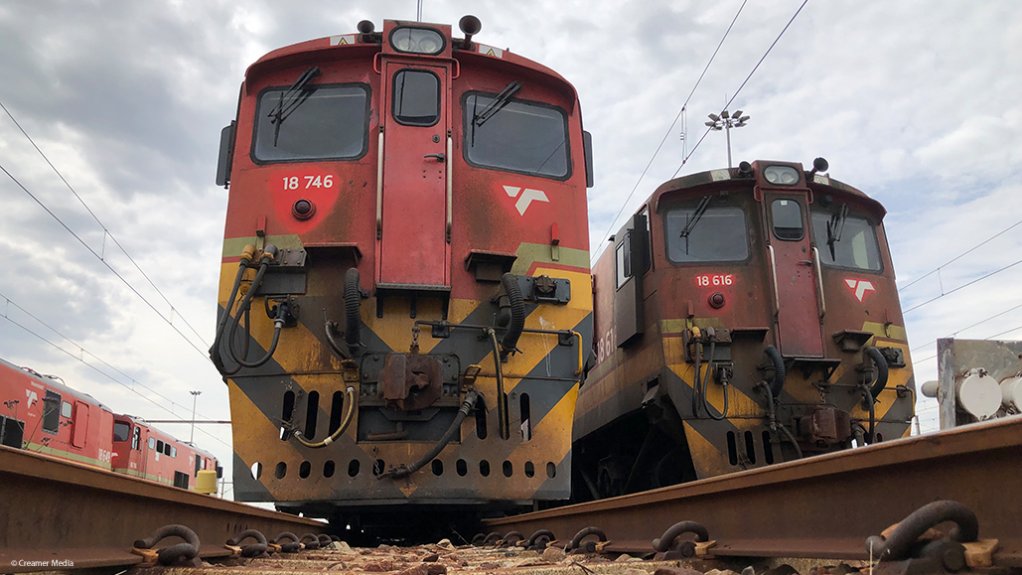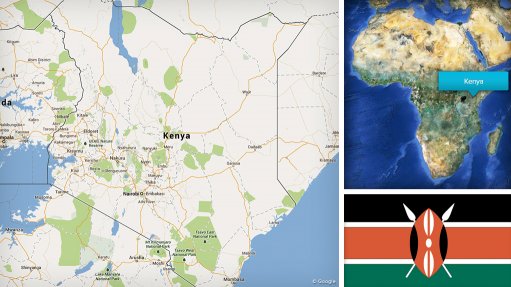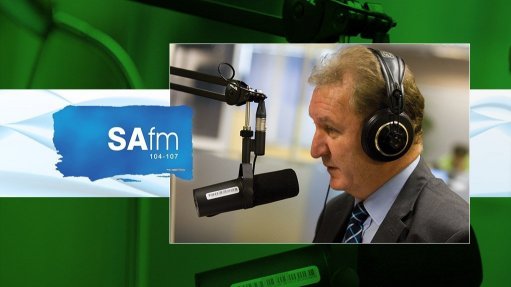More than half of copper cables on TFR's lines replaced with aluminium alternative
Transnet has, so far, replaced about 55% of the copper cables across its national railway network with an aluminium conductor steel reinforced (ACSR) cable called Tiger Wire, Transnet Freight Rail (TFR) CE Russel Baatjies tells Engineering News.
He says the switch to Tiger Wire is aimed at deterring cable theft.
Copper cables are routinely targeted owing to the metals’ superior monetary value on the scrap metal market. The ACSR cable alternative is believed to be uneconomical for criminals to extricate.
Baatjies says the replacement makes economic sense, even though Tiger Wire is more expensive than copper cable to buy initially, because it is far less likely to be stolen. While the ACSR cable does not boast the same level of conductivity as copper, he says it is sufficient to keep the rail network operating.
He explains that, once cable thieves detect the presence of Tiger Wire, they abandon it because it is worthless to them. However, he notes that there is still insufficient awareness among thieves and communities that the copper cables have been replaced, leading to criminals only realising that the cables are not copper after they have already been cut.
Although the new cables are not stolen, severing them still causes significant disruptions as the severed cables need to be replaced.
This presents a challenge for Transnet, as the criminals are unable to tell the difference between copper cables and Tiger Wire at night, when most cable theft takes place. Tiger Wire is slightly thicker than copper cables, but Baatjies admits that perhaps more effort could be made to visually differentiate it from copper cables, with signposted warnings being considered as a way of alerting criminals of the change.
Transnet chairperson Andile Sangqu says more awareness needs to be raised regarding the switch, as this will help to deter criminals from severing the lines. A campaign regarding this is still only in the planning stages but he hopes it will be rolled out soon.
“It’s going to take a while,” he notes.
Baatjies says the replacement of the cable network is systematic and ongoing, with copper cables only being replaced with Tiger Wire once a theft occurs.
“If a section of the copper cable is still intact and in a low-risk area, then we leave them as they are. We only replace them when necessary or in high-risk areas,” he explains.
However, Sangqu says the plan is to eventually replace the cables across the entire network. As far as he knows, such a tactic has not been used anywhere else in the world.
“I don’t know of any other countries that have the challenges that we do here in South Africa. Other African countries don’t use electric trains,” he comments, noting that unique problems require novel solutions.
He says that, as long as there remains demand for scrap copper and a means for criminals to sell and export it, the problem will persist.
“We need to close off the market for [scrap] copper,” Sangqu says.
Another alternative cable – a magnesium/copper alloy cable – is also being investigated as a possibility, TFR central corridor managing executive Mashudu Makatu reveals. The logic behind this alternative is that the copper cannot effectively be extricated from the magnesium without burning it, making it impossible to recycle. He says this will also effectively undermine the efforts of copper cable thieves.
In addition to significant challenges of theft and vandalism of infrastructure, Baatjies says TFR also faces challenges relating to the encroachment of servitudes by communities, as well as community unrest disrupting rail services.
He notes that compromised railway profiling, blocked drainage systems, excessive litter on the railway lines, illegal level crossings and illegal electricity connections with electrical mast poles all contributed to the list of challenges overwhelming the beleaguered rail operator.
To further exacerbate ongoing challenges, TFR has to frequently deal with the instability of local municipalities along its lines, making the situation difficult to manage and undermining the ability to implement effective interventions to prevent the problems identified.
Sangqu says TFR is exploring the possibility of installing fibre-optic cables along the rail lines, to provide Transnet with superior monitoring capabilities. The artificial intelligence-based technology that the fibre-optics supports will enable centralised control to instantly detect any tampering anywhere along the line and dispatch response teams to investigate.
“We’re looking to pilot this soon. If it works, then we will look to our customers to help us roll it out. Our customers have been very supportive,” Baatjies says.
While this will certainly improve reactive security and intervention measures along Transnet’s networks, Sangqu says that, for too long, TFR has been reactive rather than proactive in dealing with the many challenges it faces.
“We are now focusing more on preventative security, allowing us to intervene before things happen,” he says, indicating that resolving the problem of theft and vandalism will require a greater focus on intelligence and investigations to uncover the criminal elements both within local communities and within Transnet’s ranks.
Comments
Press Office
Announcements
What's On
Subscribe to improve your user experience...
Option 1 (equivalent of R125 a month):
Receive a weekly copy of Creamer Media's Engineering News & Mining Weekly magazine
(print copy for those in South Africa and e-magazine for those outside of South Africa)
Receive daily email newsletters
Access to full search results
Access archive of magazine back copies
Access to Projects in Progress
Access to ONE Research Report of your choice in PDF format
Option 2 (equivalent of R375 a month):
All benefits from Option 1
PLUS
Access to Creamer Media's Research Channel Africa for ALL Research Reports, in PDF format, on various industrial and mining sectors
including Electricity; Water; Energy Transition; Hydrogen; Roads, Rail and Ports; Coal; Gold; Platinum; Battery Metals; etc.
Already a subscriber?
Forgotten your password?
Receive weekly copy of Creamer Media's Engineering News & Mining Weekly magazine (print copy for those in South Africa and e-magazine for those outside of South Africa)
➕
Recieve daily email newsletters
➕
Access to full search results
➕
Access archive of magazine back copies
➕
Access to Projects in Progress
➕
Access to ONE Research Report of your choice in PDF format
RESEARCH CHANNEL AFRICA
R4500 (equivalent of R375 a month)
SUBSCRIBEAll benefits from Option 1
➕
Access to Creamer Media's Research Channel Africa for ALL Research Reports on various industrial and mining sectors, in PDF format, including on:
Electricity
➕
Water
➕
Energy Transition
➕
Hydrogen
➕
Roads, Rail and Ports
➕
Coal
➕
Gold
➕
Platinum
➕
Battery Metals
➕
etc.
Receive all benefits from Option 1 or Option 2 delivered to numerous people at your company
➕
Multiple User names and Passwords for simultaneous log-ins
➕
Intranet integration access to all in your organisation





















